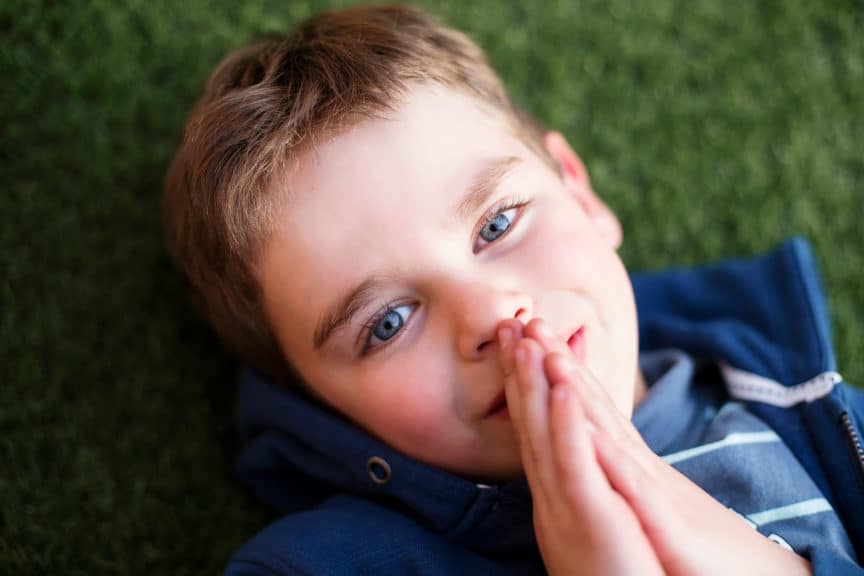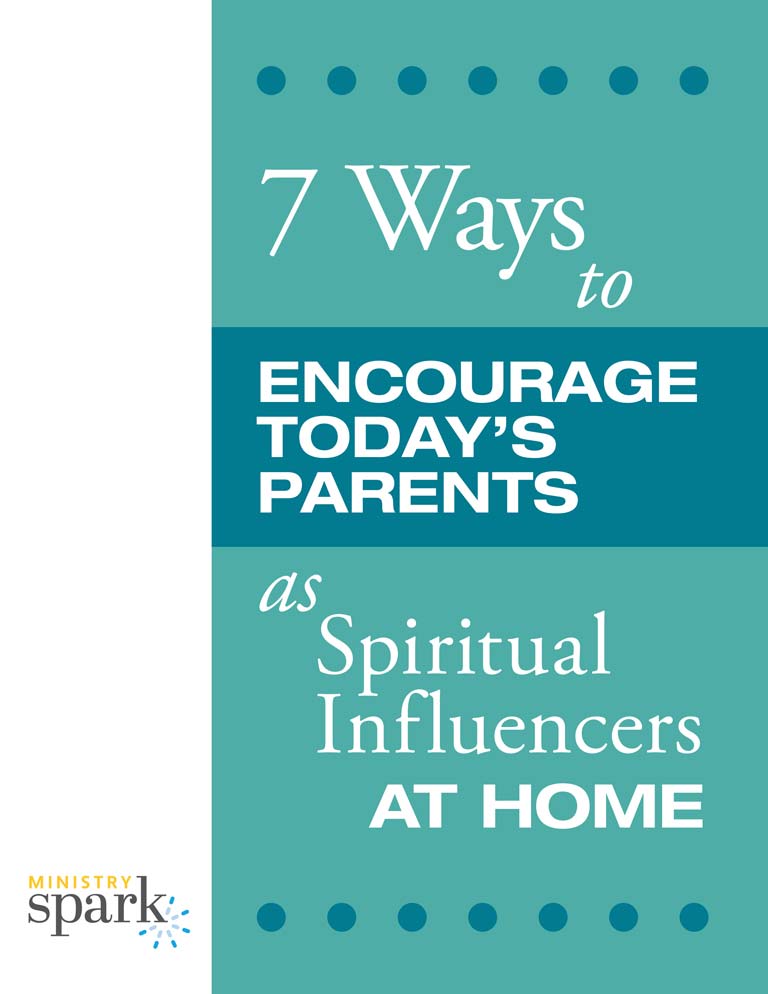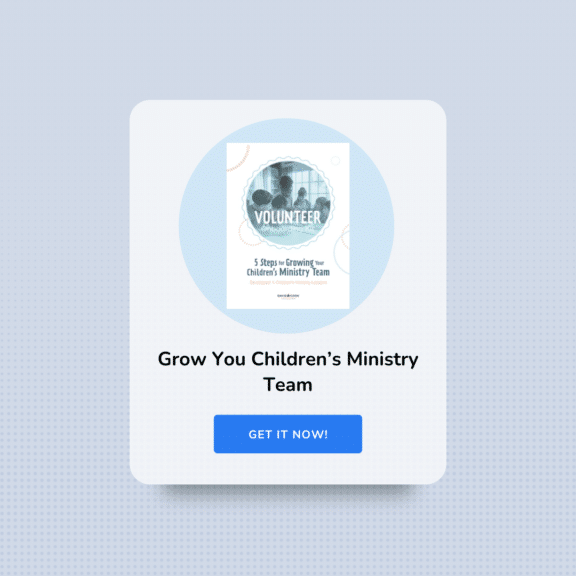Communicating with God means intentionally listening to Him. We have the opportunity to train this next generation to learn how to do this!
God speaks to children and He pursues them long before they realize it. But our world is noisy and easily drowns out His voice.
God can reach us through the noise. But we need to listen attentively, or we’ll miss it.
Worship as response is simply creating space to allow the Holy Spirit to speak to the kids in our ministries.
As they learn to recognize His voice, they are compelled toward postures of love, gratitude, and adoration, just to name a few!

But how do we create this worshipful space for children?
Picture being at a party with a noisy roomful of people. Through God’s incredible design, your ears are capable of drowning out all noise around you except for the one person you want to hear—even though that person may not be right next to you.
Similarly, God can reach us through the noise. But we need to listen attentively, or we’ll miss it.
As parents and ministry workers, we want our children to know God’s voice and be compelled to fall on their knees and worship Him! But how do we get there?
Allow Space for Response to God
First, We must believe that children are capable of hearing from God and that God is capable of reaching them. And second, we must create environments where the Holy Spirit can transform lives even at the youngest ages.
Scripture gives us some examples of God’s people responding after hearing His voice and seeing His miraculous works.
We find one example in 1 Samuel 3 (NIV®) where we see God calling out to Samuel who was about 11 years old. Meanwhile, Verse 7 tells us, “Now Samuel did not yet know the Lord: The word of the Lord had not yet been revealed to him.”
Samuel did not recognize God’s voice when He called him because he had not experienced Him yet.
However, the high priest Eli wisely instructed Samuel how to respond: “Go and lie down, and if he calls you, say, ‘Speak, Lord, for your servant is listening’” (v. 9).
Eli told Samuel what to do, then he got out of the way and let Samuel hear from God.

I used to work at a church in Southern California that created a worship-as-response environment during their weekend adult services.
New to the church, I remember asking why they backloaded their services with worship songs.
And I’ll never forget our teaching pastor’s answer: “When you hear God’s Word, it should move you to respond to what you have heard. We are creating space for our faith community to do that.”
It was a game changer for me.
It was at this church that we began experimenting with worship as response in our children’s ministry. We had a three-part plan—lay the foundation, model the life of a worshipper, and get out of the way.
Lay the foundation
We first trained our volunteers. Then, we created environments with practical expressions for children to talk with and listen to God at the end of each of our services after hearing God’s Word.
We did this both in a large group setting and in small group classrooms. Through all this, our goal was to create space for even very young children to encounter the Holy Spirit.
We used practical expressions like:
- Silence
- Journals
- Prayer walls
- Art books
- Encouragement notes
- Giving
- Spoken Words (God is amazing, God is provider etc.)
- Scripture reading
- Singing
- Dancing
Model the Life of a Worshipper
As staff and volunteers, we made a commitment to model worship through our lives.
We used Romans 12:1 as our guide, “Therefore, I urge you, brothers and sisters, in view of God’s mercy, to offer your bodies as a living sacrifice, holy and pleasing to God—this is your spiritual act of worship.”
Then, we encouraged parents to do the same. We invited them to join us during our response time or to take their children into the adult service for their response time.
There was nothing more precious than seeing young parents standing and worshipping God with their toddlers on their hips!
Get Out of the Way
We recognized we needed to get out of the way and let the Holy Spirit do what only HE can do!
At first, it was uncomfortable—the awkward silence was deafening. But we reminded each other this was not a sprint to a finish line. We were simply helping families begin a journey.
It wasn’t our job to lead it, it was our job to set the table and invite the children to pull up a chair.
I’ll be honest—it didn’t always turn out the way we had hoped, but for the times it did, it was well worth being out of our comfort zones.
The effects of allowing the Holy Spirit to work in the lives of the children in your ministry through worship response will probably not be visible overnight. But you can be sure their hearts are being shaped.
They will never forget their first true encounters with the living God.
It wasn’t our job to lead it, it was our job to set the table and invite the children to pull up a chair.
Response Looks Different
A Verbal Response
One of my favorite memories is of a group of Pre-K and Kinders (four-to-six-year-olds). We invited them to sit quietly. Then when they felt like it, they were to stand and call out an attribute of God.
We gave them a few examples, and then we waited. It felt like we waited an eternity when suddenly a sweet little four-year-old girl stood and said, “God is awesome!”
After that, We all watched with tears streaming down our faces as one by one these children began to call out who God was to them.
God is my friend! He is my Savior! God healed my mommy! On and on it went until almost every child had spoken beautiful words out loud to God.
A Quiet Response
Another small church lined an entire wall with butcher paper in the third-grade classroom.
After teaching small group, the leader explained there was one color of pen to write prayer requests and another color to circle the request once God has answered the prayer.
As a result, week after week students ran to the classroom to see what God had done. At the end of every class, they were given quiet time to thank God for answered prayers.
Worship as response offers a path for children to encounter the life-changing God who keeps each of us coming back for more.
In short, that simple piece of butcher paper became a tangible symbol for an amazing God we can trust to answer our prayers.
Consequently, it let the children know that God is alive today—we are a part of His story; He didn’t just speak to His people and do miracles during Bible times.
Most importantly, our goal is to raise a generation of children who have unique relationships with God that the world hungers for.
Worship as response offers a path for children to encounter the life-changing God who keeps each of us coming back for more.

Ready to help parents create an environment for spiritual growth?

Ready to help parents create an environment for spiritual growth?












